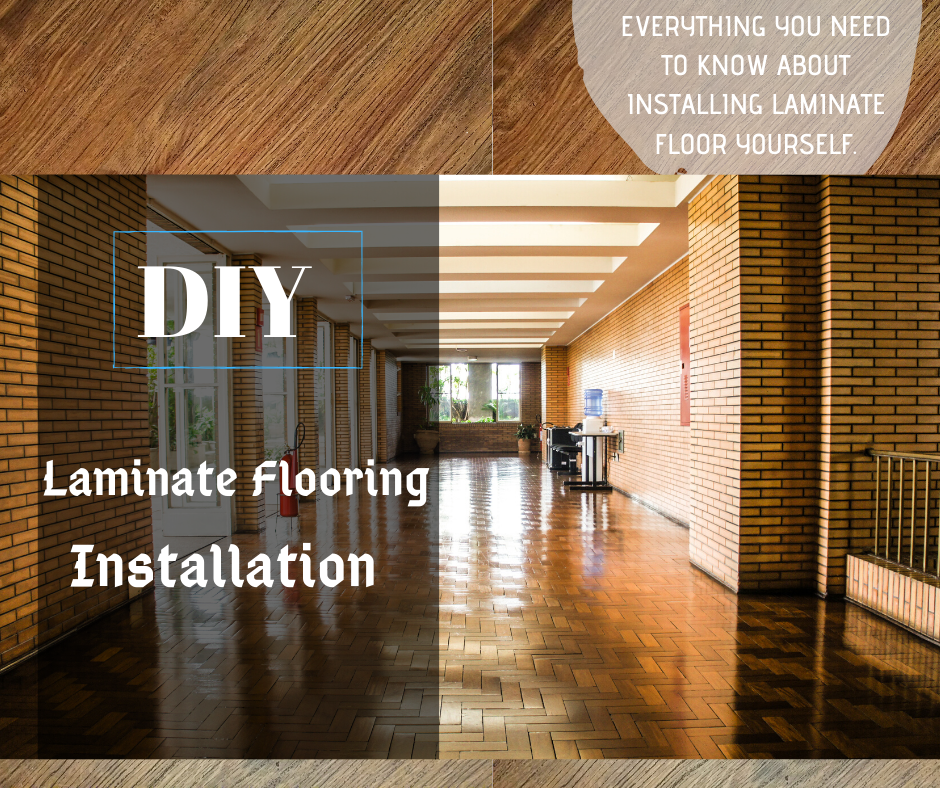Laminate has proven as the best flooring development in the DIY home improvement. The budgeted flooring project requires few tools, a bit of technical flooring knowledge, and a mild experience do not ask for any professional assistance.
Just follow the steps one by one and learn how to professional install the laminate flooring by yourself.
Basic required tools
- Pull Bar
- Broom
- Jig Saw
- Wood Chisel
- Eye & Ear Protector
- Wall Spacers
- Oscillating Saw
- Utility Knife
- Sealant
- Tape Measure
- Hammer
- Straight edge (6 ft)
- Tapping Block
- Pencil
- Painter’s Tape
Which one the better option? Renting or Buying the tools
Most of the above listed tools are probably stored in your garage. While the remaining ones can be bought at an affordable price.
The major equipment you need are electric saws. The oscillating saw is used to undercut the doorjambs. Even after completing the DIY project, the tool can be handy for future home improvement projects, so it can be a great investment.
A saw is needed to cut the bigger planks. It is useful to rip, great long cuts, and is available in less price in the market.
These are the basic tools which can be over-used again and again. If you are a frequent DIY actioner, the investment is a worth. Considering the amount of money, you save by installing the entire floor by yourself, just skip the hassle of renting the tools.
Choose a lock system laminate flooring
The locking system in laminates are easy to install and are glue less. In laminates you are given the option of selecting high quality flooring option. One of the convenient things about this system is that every locking system is of the same pattern.
This means the floating water-proof vinyl flooring and floating wood floors can be used with the same locking instruction.
Selecting a right kind of product for you
For the DIY, head for trusted retail brand. The high-quality products are easier to install, are of professional grades available with warranties. Features of branded laminates are listed below;
- They are designed to withstand the demands of real life. They are stain resistant, with realistic look of hardwood floors.
- The product line is waterproof, with pet plus protection, waterproof warranty for 10 years.
- Few of the high-quality laminate flooring can be securely installed without using any adhesives.
- There are products offering warranty in stains, fading, wear due to manufacturing defects or artificial light.
Step by Step installation process
Pre-Installation Process
To keep the warranty valid, instruction must be followed properly, which means no cutting corners or skipping any steps. Note: These pre-installation steps are generic ones, do consult the flooring consult before implementing it.
Preparation: Laminate serves as floor covering instead of structural material. Commence the process by clearing the carpets, wood flooring that is installed in the sub-floor. Remember that the laminate flooring materials are not to be used in floor drains and sump pumps.
Acclimation: For 48 hours laminate floors need to be set unopened in the space which will be used. Some flooring brands do not need any acclimation.
Sub floor preparation: Flooring installation require clean and dry sub floor surface. Clean every debris from the floor. Fill in every cracks or floors to level the floor. Some high spots may need to be grinded or sanded (a dusty process).
For concrete sub-floors vapor barrier is to be installed to prevent moisture. Remember no vapor is need for the wooden sub-floor.
Testing of sub-floor moisture: Testing the moisture on the concrete sub-floors, the value must be greater than equals to 5lbs/1000ft 2/24hr or< 80 % RH (this value is obtained using calcium chloride moisture test). Moisture reading for wood sub floor must not be greater than 12%.
Remove under cut door casings and frames: Under cuttings provide a professional look. While planning, leave a concealed of 3/8” and ¼” underneath the door frame. Use 3/8” spacers to maintain the proper gap expansion.
Remove floor molding, and baseboards. While working on the baseboards cut the tops with utility knife. Next lay a loose plank on top the underlayment. Use oscillating tool to cut the bottom of door jamb.
Installing underlayment’s: An underlayment padding needs to be installed between the laminate flooring and vapor barrier. However, if the pad is already attached than there is no need for additional underpayment. Instead cover the entire space at once, roll enough of underlayment. Repeat the process after laying the planks.
Measuring planks: Strategically measure the planks at the beginning of the project. Measure the width of the room in inches and divide the width of the plank. This allows you to find out the number of planks used and the size width you will need.
Inspect the damaged board: Finding the damaged board pre-hand will save you from unnecessary headache. Carefully inspect each plank before installing it. Carefully look for chips, cracks, before it becomes a serious pain.
Installation Step
Step 1: Lay a plank under the door jamb and finish the installing process. Planks must be installed parallel to the main light source of the room. If no natural exterior light source is present, then planks need to be installed to the longest wall. Remember the first row of the planks should be approximately of the same length as the last.
Step 2: For more natural appearance, do not repeat the patterns. Wood like laminate floor should be place randomly.
Step 3: Use a saw, to remove the tongue of the planks. This prevents the problem of spills.
Step 4: The smallest usable piece shall be 12- inches in length.
Step 5: Install planks length wise in rows. Once the length wise connection is set lower the plank and apply the pressure. No hammer is needed for this.
Step 6: Measure the last piece in the row and rotate it to 180 degree. Put one end against the wall cut and rotate back to 180 degree.
Step 7: Assemble the method, to add an additional row. Work on the top of original start rows. Pull the planks and position them before locking them.
Step 8: Place transition strip in all the doorways. Most of the installers ignore the rules and face the t-moldings issue later.
Step 9: In the last row, cut down the last row size. If its not straight, you can scribe it. Set direct boards on the top and take out the scrap. Depending on the size of the boards you may install crowbar.
Step 10: Time to re-touch the floor. Remove every spacer and install in moldings. Never attach the moldings to the floor. Use flexible silicone sealant. Professionals use high-grade constructive adhesives to install transition strips.
Routine Maintenance & Cleaning
After putting lots of time and effort on the DIY floors, you surely want a safer method to protect it. To maintain the laminate floor in pristine situation;
- Use felt pads while moving your furniture around.
- Avoid using wax, oils, soaps, polish, detergents and varnish in the installed floor.
- Use dust mop or brush with soft bristles, don’t use spinning heads or beating bars.
- For slight damp maintenance use approved laminate cleaner.
- Never keep moisture on the floor. Wipe the spills immediately.
- Never use any sort of cleaning machines such as steamers, power cleaners, and spray mops.
- Remove water immediately, as wet floor can damage the floors.
- For tough stains such as ink/lipstick use nail polish remover to wipe it.
Glorious Flooring has affordable and quality marked laminate flooring. We are the wholesale dealer in the Sydney Market. Contact us for more information on the flooring!



